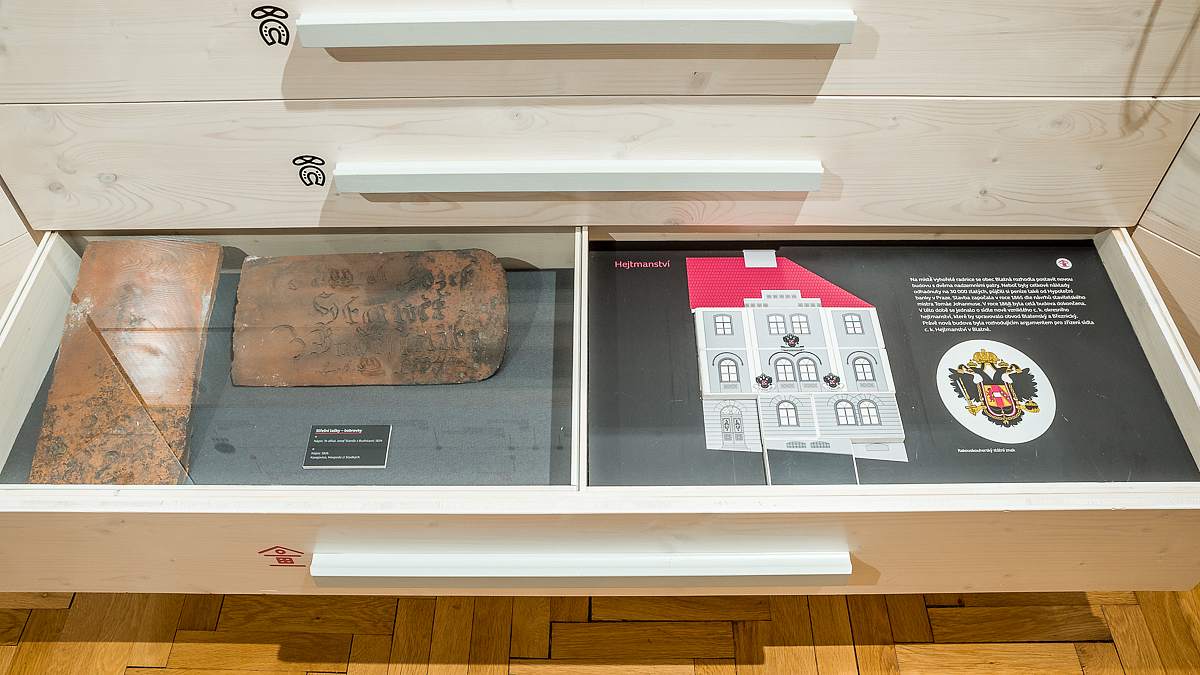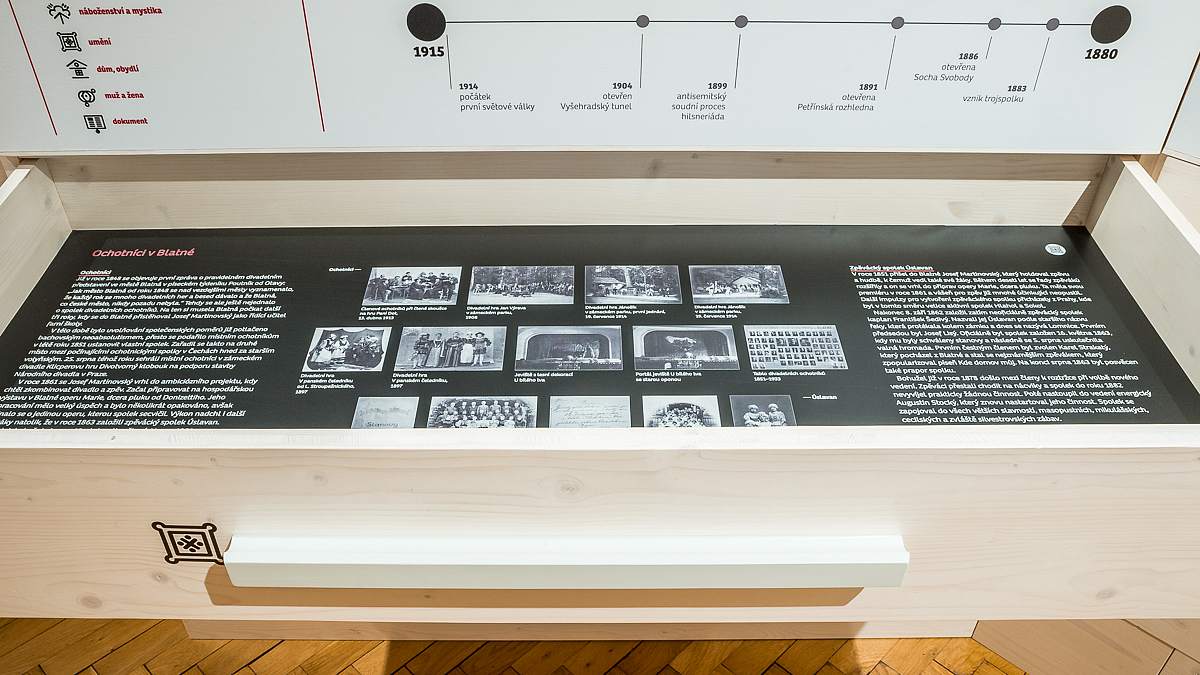FROM A TOWN TO A DISTRICT
The causes of the rapid development of the town of Blatná in the second half of the 19th century – in 1868, the town became the seat of the district governorship – can be traced to many events, which were sometimes incidental. Some were outright disastrous such as the fire in 1834. Back then, 118 houses burned down directly in the town centre, including the town hall and the belfry. The church was saved thanks to the fearlessness of the local residents. The fire had created empty spaces which could be rebuilt into a modern style and so we can now admire the neo-Gothic bell tower (1836), the Empire house and other classicist buildings on the square, as well as the town hall, which, after its completion in 1868, became the seat of the district governorship, court, tax office and town council of Blatná.
The district administration was not united into one centre until after 1866, when the Habsburg monarchy lost the war with the numerically weaker Prussia. One of the reasons for this loss was the gear of the Prussian army, which had new rifles with buttocks charged from behind, such as the Remington Ilion 1864. While these rifles were not that accurate, they doubled the rate of fire, thus counterbalancing the enemy’s numerical advantage (bayonet attacks also played a role here). The defeat led to widespread reforms, such as the aforesaid unification of the district administration. Blatná competed for this post of the district town with Březnice, but it was Blatná that could offer a newly constructed building and thus became the centre of the district and would hold onto this position until 1960.
The bourgeoisie itself had also become active and got involved in public affairs and in cultural life. At first, in 1851, an association of amateur theatre actors was established. In 1861, Josef Martinovský threw himself into the preparation of the opera Mary, the Daughter of the Regiment, thereby encouraging the passion for singing among some residents. A year later, the singing association Úslavan was founded. Another important association was the gymnastics organization Sokol, which was created in 1885.
All these associations participated in public life in the same way as the teachers and students of the Blatná school. The old school building from 1871 was no longer fit for teaching and so in 1901 the decision was made to build a new one. The project was implemented by builder Karel Nekvasil between 1902 and 1904 according to a design by Karel Fiala. The construction was supported by the whole community not only financially, but mainly through work. To this day, the building remains one of the most prominent landmarks of the town.


